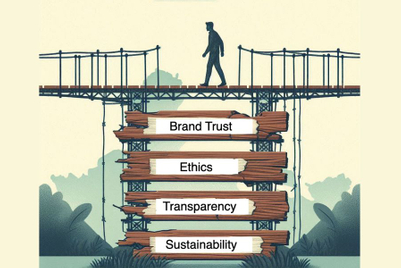
The health and wellness industry is on a meteoric rise, projected to reach $9,245.8 billion globally by 2033, growing at a CAGR of 5.2%. Asia stands at the forefront, accounting for a substantial 33.6% market share, according to Precedence Research.
This growth represents a fundamental transformation driven by expanding education, increased information access, rising disposable incomes, demographic shifts, and changing consumer preferences, in addition to increasing chronic prevalence and mental issues. This growth has also led to a paradigm shift in how people approach health and wellness.
This transition transforms healthcare from reactive to proactive, prioritising prevention and holistic well-being. Consumers now seek targeted solutions that address physical, mental, and spiritual health, targeting both, their immediate and long-term wellness goals.
While this transformative shift in health and wellness promises significant opportunities, it also presents substantial challenges. Asian consumers, though open to experimentation and quick to adopt innovations, are experiencing a major change in brand engagement.
This evolution is most evident in India's food and nutrition sector, where established brands are experiencing an unprecedented erosion of consumer trust. Emerging challenger brands are capturing market attention through strategies of radical transparency, emphasising clean ingredients and leveraging personal, founder-driven narratives.
This challenge is further complicated by the rapid pace of innovation and the widespread accessibility of health information through digital platforms. The traditional 'expert influencer' has shifted from celebrity endorsements and medical professionals to authentic, community-driven voices.
While wellness data can empower, it may often lead to confusion, anxiety, and decision paralysis. Platforms like Google (search), WhatsApp, YouTube and increasingly various AI tools such as ChatGpt have not only democratised the health information but have also contributed to anxiety-inducing echo chambers.
As anyone (and everyone) can publish content on these platforms, consumers are often exposed to repetitive and, at times, unverified information, potentially leading to misinformation and increased anxiety among consumers.
Major FMCG brands have been exposed for high sugar content, and exaggerated health claims, whilst challenger brands continue reshaping the beliefs around what is healthy. As a result, consumers are seeking more authentic sources of trust to help them navigate the noise and make confident decisions.
Eastern wellness philosophies like Ayurveda and Chinese Medicine are shaping global consumer expectations, emphasising food as medicine and holistic well-being. This trend manifests through three critical consumer demands: ingredient transparency, cultural connection, and personalised health solutions.
Successful brands must respond strategically by simplifying complex offerings and creating meaningful connections. For instance, companies like Olly have demonstrated how benefit-driven approaches can transform technical categories into accessible, compelling offerings.
Supradyn in India leveraged trusted ingredients like turmeric and tulsi for its immunity supplements. Kissan developed a premium health-conscious range called Kissan Fables, demonstrating purposeful innovation. The Whole Truth exemplified brand transparency by focusing on 100% ingredient disclosure and consumer education.
In a vast and diverse country like India, regional flavour preferences and religious beliefs play a significant role in ingredient-led innovations. For example, despite its well-known health benefits, ginseng is not compatible with a Jain diet, which is widely followed in Gujarat. Similarly, Kellogg’s removed its iconic cockerel from branding in India to better align with the sensitivities of a predominantly vegetarian market.
The health and wellness industry’s growth represents a profound opportunity. Brands that simplify, innovate, and remain authentic—all while staying culturally relevant—will lead the charge in capitalising on this new-age wealth.

— Tanvi Shah, senior brand strategist, Design Bridge and Partners.





.jpg&h=268&w=401&q=100&v=20250320&c=1)



.jpg&h=268&w=401&q=100&v=20250320&c=1)
